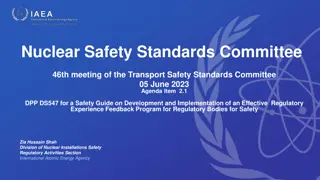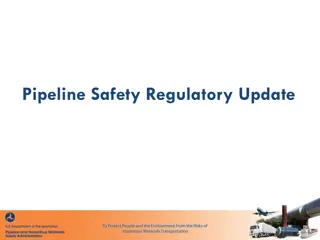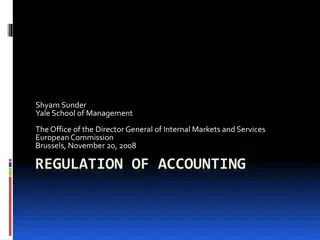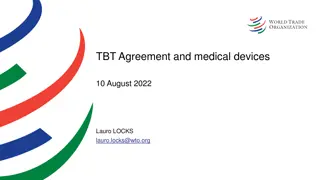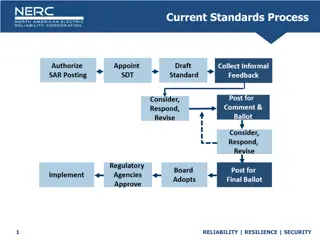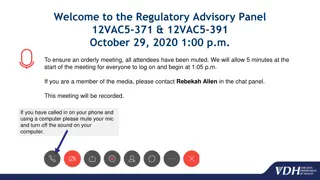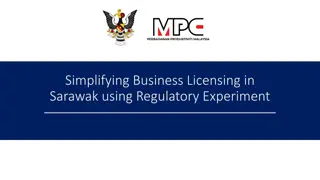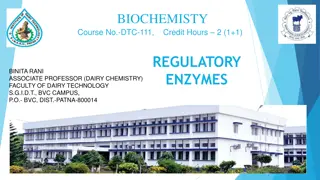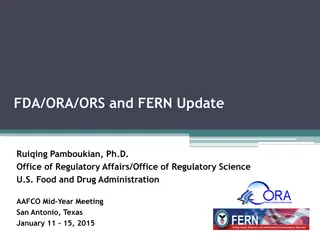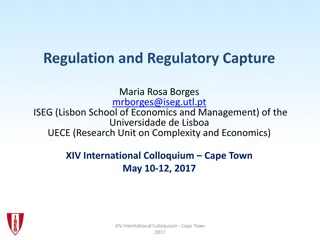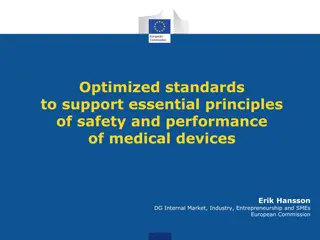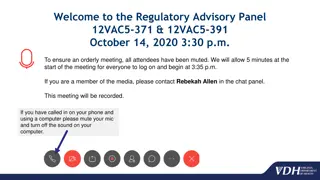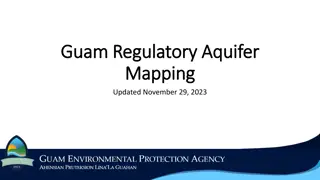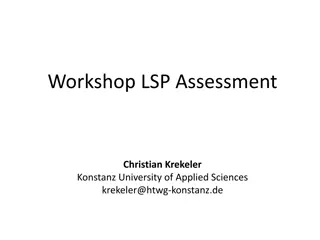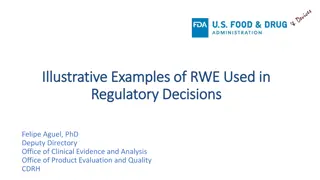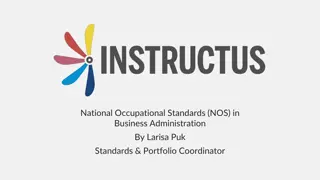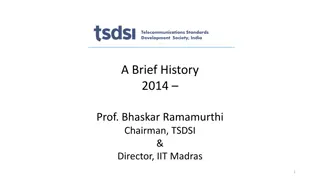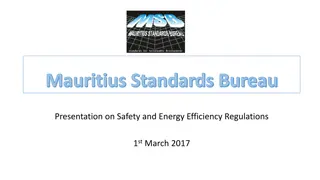Usage of Standards for Regulatory Purposes Among IMDRF Members
Standards play a vital role in regulatory practices within the IMDRF, utilized to ensure conformity with safety and performance principles in medical devices. The Standards Working Group comprises members from various countries, overseeing the recognition and revision of standards to align with international norms. Recognized standards offer a presumption of compliance, and periodic reviews are conducted to maintain alignment with essential principles.
Download Presentation

Please find below an Image/Link to download the presentation.
The content on the website is provided AS IS for your information and personal use only. It may not be sold, licensed, or shared on other websites without obtaining consent from the author. Download presentation by click this link. If you encounter any issues during the download, it is possible that the publisher has removed the file from their server.
E N D
Presentation Transcript
How standards are used for regulatory purposes among IMDRF members Tatiana Pika member of Standards Working Group, Roszdravnadzor
Standards are the distilled wisdom of people with expertise in their subject matter and who know the needs of the organizations they represent people such as manufacturers, sellers, buyers, customers, trade associations, users or regulators .* * accessed 15 June 2017 https://www.bsigroup.com/en-GB/standards/Information-about-standards/what-is-a-standard/,
Standards Working Group (SWG) Members Scott Colburn/FDA/USA, Chair Ying Huang/TGA/Australia Fabio Quintino/ANVISA/Brazil Kevin Day/Health Canada Jia Zheng/SDA/China Maurizio Andreano/DITTA/Siemens Peter Linders/DITTA/Philips Naoki Marooka/DITTA/Shimadzu Erik Hansson/European Commission Matthias Neumann/European Union Jeff Eggleston/GMTA/Medtronic Hideki Asai/GMTA/Hitachi Hiroshi Ishikawa/PMDA/Japan Madoka Murakami/PMDA/Japan Vladimir Antonov/Roszdravnadzor/Russia Tatiana Pika/Roszdravnadzor/Russia Christopher Lam/HSA/Singapore Kookhan Kim/MFDS/Korea Heungil Ryu/MFDS/Korea Kyunghyun Kim/MFDS/Korea Gail Rodriguez/FDA/USA
Role of Standards (IMDRF Model) Role of Standards in the Assessment of Medical Devices Study Group 1 Final Document GHTF/SG1/N044:2008 Main purpose: demonstrating conformity with the Essential Principles of Safety and Performance of Medical Devices and IVD Medical Devices (IMDRF FINAL:2018) GRRP WG/N47 Methods: - use of recognized standards; - use of non-recognized standards; - other methods.
Use of recognized standards (IMDRF Model) Recognition of Standards The method should include a mechanism of periodic review and realignment of nationally recognised standards to the international standards. The term recognised standard does not imply that such a standard is mandatory. Use of recognized standards Recognised standard - standard deemed to offer the presumption of conformity to specific Essential Principles of Safety and Performance.
Use of recognized standards (IMDRF Model) Revision of Recognised Standards - a requirement in a specific standard is determined to be inadequate to ensure conformity to a specific Essential Principle; - one or more of the Essential Principles has changed, - changes in the state of technology or accepted practice necessitate revising the technical specifications in the standard. Changes to the Recognition Status - safety concerns identified through post-market surveillance activities or user experience; - the availability of a revised version of the standard.
IMDRF Model lternative solutions to demonstrate conformity with the Essential Principles of Safety and Performance of Medical Devices and IVD Medical Devices - national and international standards that have not been given the status of a "recognised standard" by the Regulatory Authority; -industry agreed methods; - internal manufacturer standard operating procedures developed by an individual manufacturer; - other sources that describe the current state of technology and practice related to performance, material, design, methods, processes or practices.
Use of recognized standards among IMDRF members recognized China Russia (EEU) Korea USA Singapore* Europe Canada* Japan* Australia voluntary mandatory Brazil non-recognized * have one mandatory standard or section of the standard (linked to regulatory framework)
Standards Recognition and Use Work Item goal: advance harmonized use of standards Two objectives Compare RAs recognition and utilization policies Update list of commonly recognized standards Two elements Survey Checklist of recognized standards
Recognition Program Details 7 of the 10 respondents (70%) report that they have a formal standards department or function within their RA The lack of a formal department notwithstanding, 9 (90%) have in place formal systems policies and processes Systems identify, recognize and maintain an approved list of standards and encourage their use by manufacturers in device submissions
Recognition Program Details, contd Most, whether formal or informal, maintain a list of recognized standards that manufacturers may declare conformity to for purposes of device submissions Two respondents programs are regional programs One RA has in place an ad hoc team that plans to transform itself into a formal department in the near future
Recognition Program Details, contd Many responses appear to be a hybrid program, with both formal and informal aspects (e.g., a formal list of recognized standards, but an informal staff and process for producing the list) Several mention that formalization of their standards program in the future RAs report both rules/regulations and statutes as the authority for their programs National Bodies participate directly in 6 of 10 RAs programs (more regulations than statutes) they expect further
Managing a Recognition List 60% of respondents report they are required to seek outside input into which standards will be recognized. Most require a public consultation, at least for list publication Others permit input from the public 90% publish the list of recognized standards; all of those make the list of recognized standards available to all Frequency of list updates ranges from case by case basis to periodically to at least five yearly
How to Gain Recognition Again, a wide spectrum of expectations for requesting recognition; some require specific forms and others simply accept a request Some have ad hoc or technical teams consider the addition of new standards; some will accept requests from anyone
Partial v Complete Recognition 100% (10 respondents) allow partial recognition
Conformity Assessment 100% of respondents allow Declarations of Conformity (DoCs) 9 of 10 (90%) sometimes require additional documentation to the DoC Generally based upon device risk Testing reports are the most often required documents 90% accept test results from other countries in support of a DoC
Thank you for your attention! Tatiana Pika member of Standards Working Group, Roszdravnadzor


